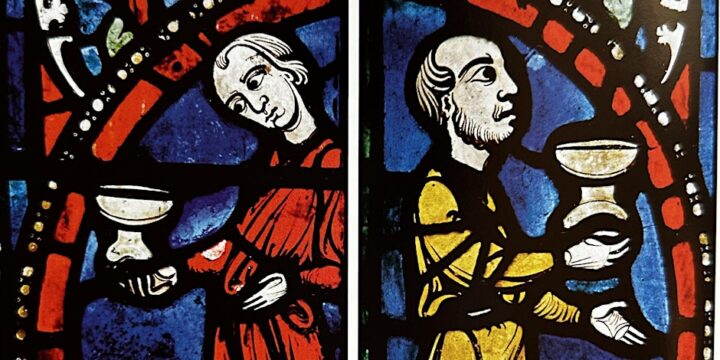Dr. Mary B. Shepard provided a detailed exploration of the Saint Lubin Window in Chartres Cathedral. Dr. Shepard began by explaining the layered composition of medieval stained-glass windows, and of the Saint Lubin window, in which a narrative unfolds through its armature (iron framework), mosaic ground, and the arrangement of quatre-foil panels, central medallions and borders. The window is read from the bottom up.
The Saint Lubin window, situated in the second bay on the north nave aisle, tells the story of Saint Lubin, the 17th bishop of Chartres, ordained in 544 CE. Lubin’s life is depicted through various registers showing his humble beginnings as a shepherd, his monastic education, and his rise to become an influential bishop. The narrative emphasizes his virtues, in particular loyalty, dedication, and leadership, rather than legendary or miraculous events.
In parallel, the window medallions also highlight the role of tavern keepers and wine criers, connecting the cathedral’s religious life with the local economy of wine production. The depictions of wine criers in the borders serve both as a visual narrative and as a testament to the symbiotic relationship between the bishop and clergy who owned vineyards and the local wine trade.
Overall, the window reflects the cathedral’s values, celebrating Lubin’s legacy as a model bishop while also representing the good stewardship of local resources like wine. Dr. Shepard emphasized the windows were designed for active engagement, prompting medieval viewers to reflect on the qualities of leadership and community.
This lecture was not recorded at Prof. Shepard’s request.


